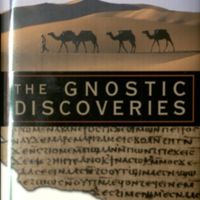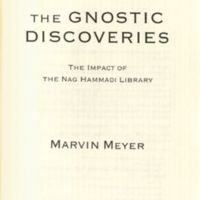The Gnostic Discoveries: the impact of the Nag Hammadi library
Dublin Core
Title
The Gnostic Discoveries: the impact of the Nag Hammadi library
Subject
Gnosticism
Nag Hammadi codices
Nag Hammadi codices
Description
In 1945 an Egyptian peasant discovered a jar filled with ancient manuscripts. Painstakingly restored and translated, these fragments came to be known as the Nag Hammadi library. Included are gospels of Jesus's life that never made it into the modern Christian Bible as well as a treasury of lost, esoteric wisdom that portrays a side of Christianity suppressed by the institutionalized church. Through them we glimpse an alternative perspective on Jesus and his earliest followers, including the influence of Gnosticism on their beliefs. "Gnosticism" designates a series of ancient religious movements which permeated Judaism, Greco-Roman religion, and what now appear to be different varieties of Christianity. Some of these alternative views, including Jesus's relationship to Mary Magdalene, have revolutionized biblical scholarship. Meyer provides an overview of all the texts and their contents and discussing their meaning and significance for us today.--From publisher description.
Creator
Marvin Meyer
Table Of Contents
Introduction -- Fertilizer, blood, vengeance, and codices -- Coptic texts from the sands of Egypt -- They will not taste death -- The wisdom of insight -- Valentinus the Christian mystic -- Hermes, Derdekeas, thunder, and Mary -- Epilogue.
Text Item Type Metadata
Original Format
Book
Citation
Marvin Meyer, “The Gnostic Discoveries: the impact of the Nag Hammadi library,” Humanities Hub, accessed November 16, 2025, https://humanitieshub.sdsu.edu/omeka/items/show/973.


